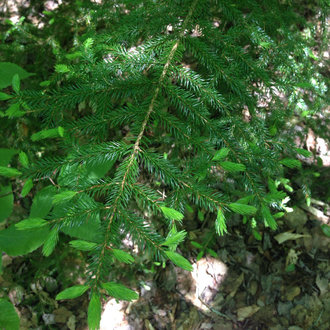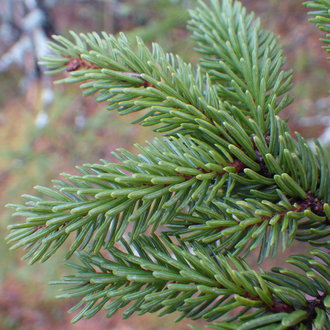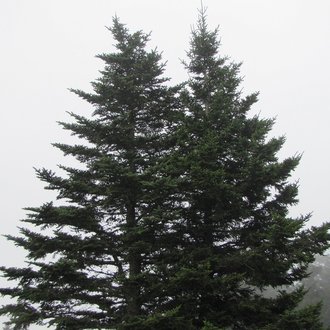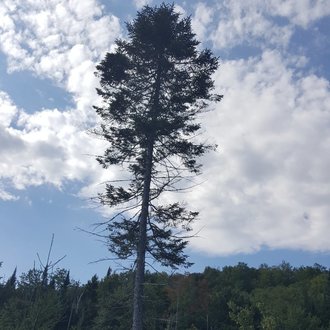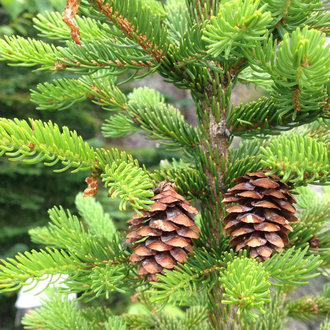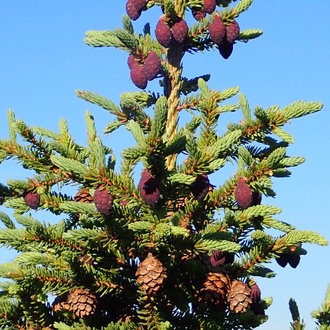Red Spruce vs Black Spruce
This guide is under construction and has not been published yet. It may have errors. When in doubt, double-check other sources for definitive ID.Red and black spruce can easily be confused where their ranges overlap. Both have hairy twigs, and the differences in needle and cone length (both average slightly longer on red spruce) are unreliable due to variation and only slight difference between the species. These species also can hybridize or intergrade, so it is not possible to clearly identify all trees as one species or the other. Most trees can be easily distinguished by needle color, growth habit, habitat, and the retention of cones.
Red Spruce (Picea rubens) | Black Spruce (Picea mariana) |
An evergreen tree of eastern North America; the most southerly-distributed spruce of the east, found at high elevations in the south of its range. | A conifer with a northerly distribution, native to North America; found on acidic soils, often on poorly-drained sites, often with stunted growth. |
Foliage a rich green color, not bluish. Photo © Charlie Hohn, CC BY 4.0. | Foliage bluish. Photo © Ben Armstrong, CC BY 4.0. |
Cone-shaped and averages much lusher foliage overall. Much wider at the base. Photo © Ken Kneidel, Public Domain. | Sparse, top-heavy growth habit; often loses all of its lower branches by maturity and only has foliage at the top. Narrow growth habit. Photo © Charlie Hohn, CC BY 4.0. |
Cones slightly larger. Cones are dropped shortly after they mature. No cones will be retained on tree by the time new cones are growing. Photo © Ken-ichi Ueda, CC BY 4.0. | Cones slightly smaller. Unripe cones dark purple in color. Retains some cones on the tree for many years; trees will still have old cones while growing new cones. Photo © Rob Foster, CC BY 4.0. |
References & External Resources
These short lists show only links helpful for ID. For a complete list of references and resources also covering other aspects of ecology, visit the links section of the full article on each plant, which is the first entry here.



